Eggs are our ingredient of the season. You can find our full archive of egg posts here.
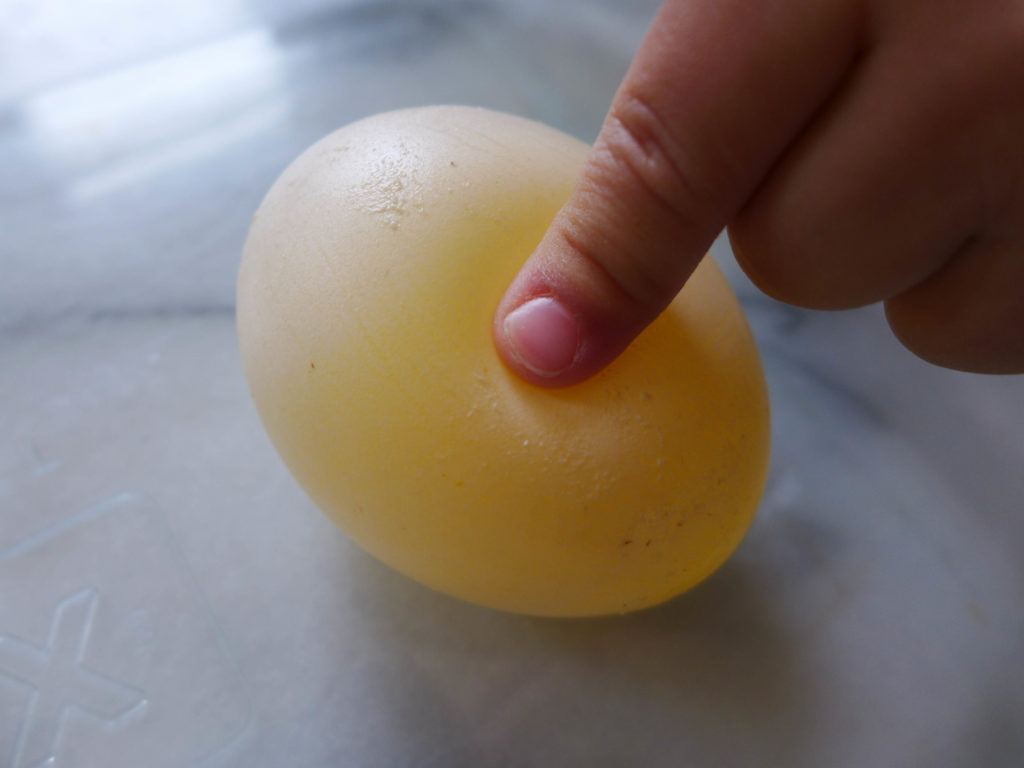
Today we’re excited to inject a bit of science into this ingredient series!
You may know this as the “Naked Egg Experiment”. You may have even done this experiment as a kid. In this post we take that basic experiment and add a few more fun steps.
Ok, so this experiment will take place over about a week or so, but the ingredients and steps are super simple. It’s the perfect Kitchen Science 101 experiment that will inject a bit of wonder and excitement in those little kid noggins!
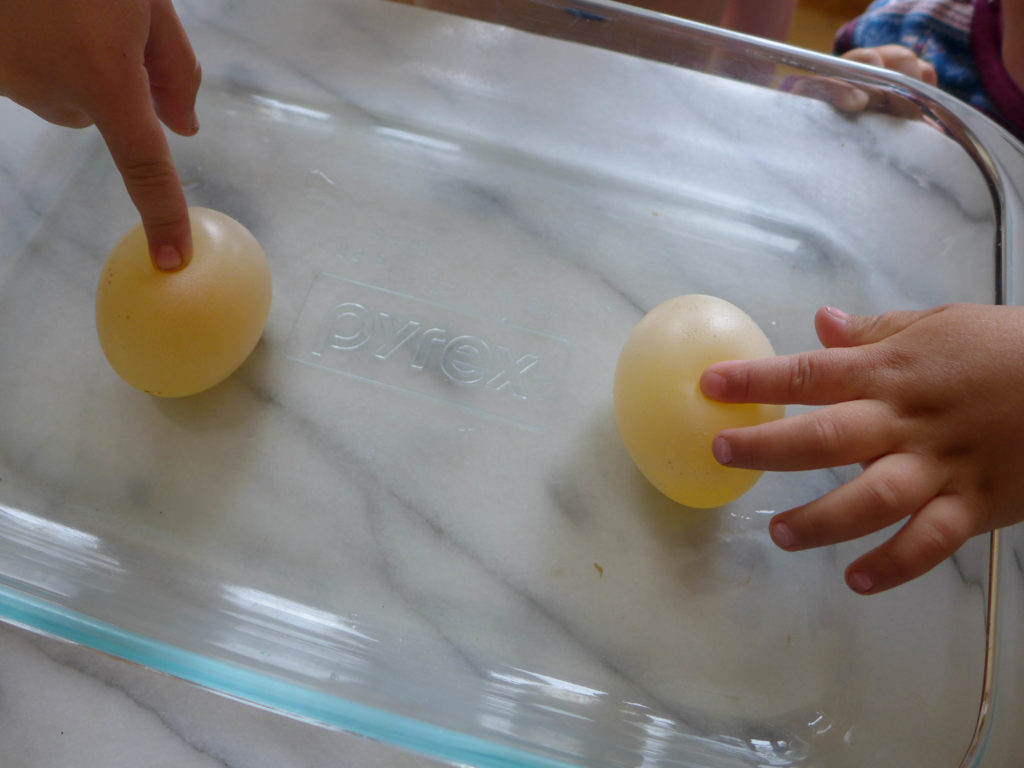
Phase 1 Experiment
During this phase, you’re going to use vinegar to dissolve the hard shell of a raw egg. What remains are the insides of the egg held together by the thin membranes that are normally inside the shell.
White vinegar is typically 96% water and 4% acetic acid. The acetic acid in vinegar dissolves the calcium carbonate in the egg’s shell, producing water + carbon dioxide + calcium acetate.
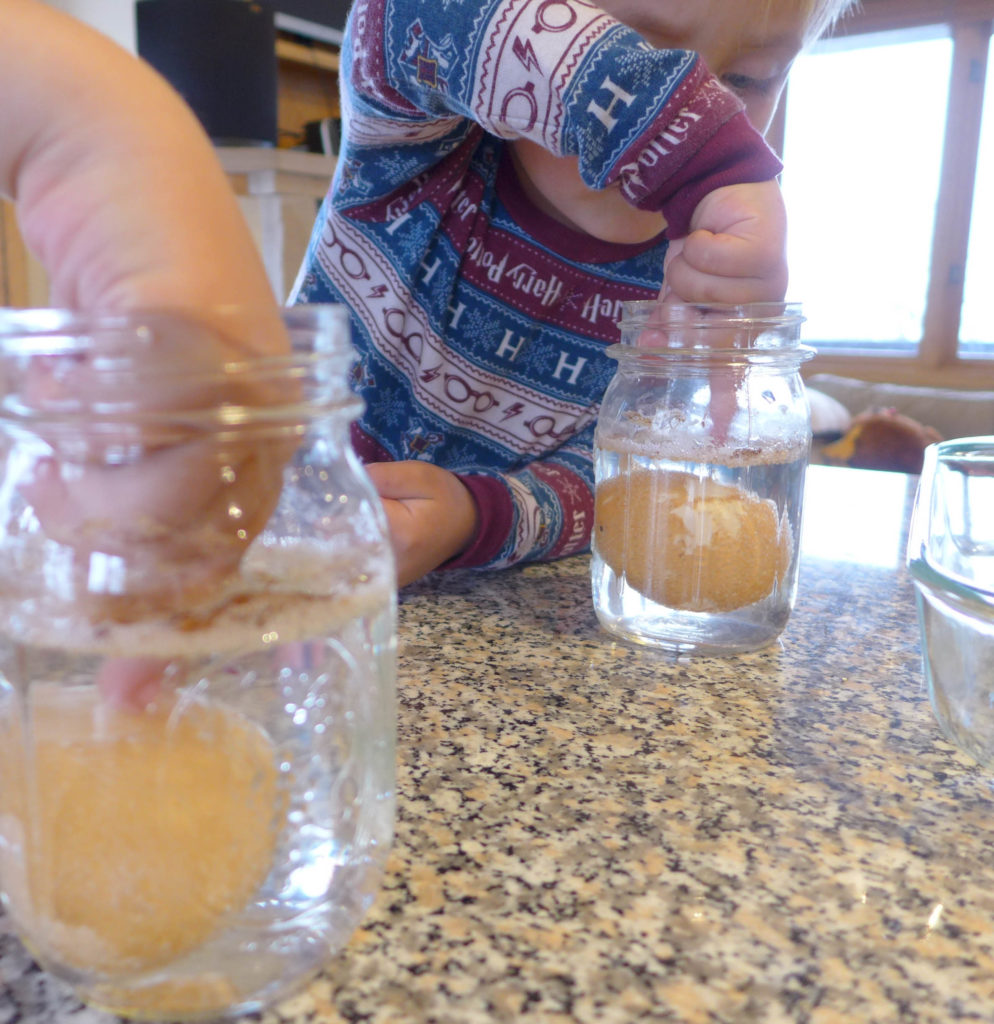
How To
- Place a raw egg in a glass or jar and completely cover it with white vinegar.
- After about 1 day, you should see a scummy layer form on the top of the vinegar. If you touch the egg, you’ll see that remaining areas of soft shell will rub off.
- You can keep the egg in the vinegar for another day or two until the shell is completely dissolved.
Now What?
- At this point, the egg may be slightly larger than it originally was. That’s because some of the water in the vinegar passes through the egg’s semi-permeable membranes (more on this below!).
- Now, you can gently play around with your egg! If you’re doing this with kids, I like to put the naked eggs in a large pyrex or tray – something that would contain the mess if there’s an accident.
- Give your egg a gentle poke or squeeze!
- Bounce your egg! You can see a video of us bouncing eggs in our Instagram feed.
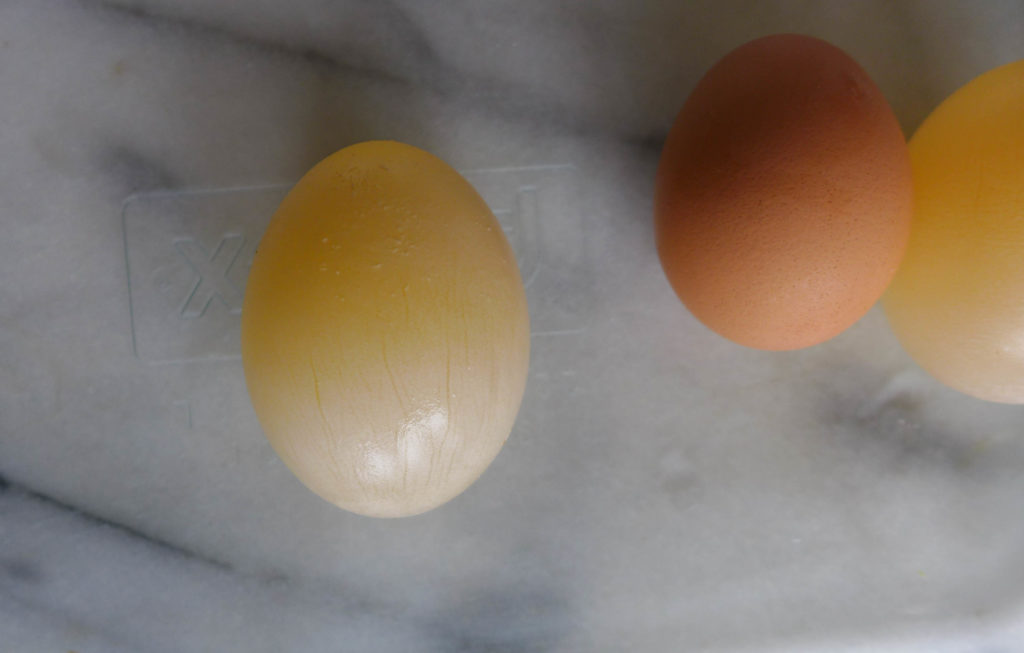
Phase 2 Experiment
For this phase, we’re going to experiment more with those semi-permeable membranes and osmosis.
Osmosis is the process by which a liquid passes through a membrane in order to equalize the concentrations of the solutions on each side of the membrane. In this case, the egg contains water with its whites.
When we put it in the vinegar during Phase 1, some water passed from the vinegar into the egg in an effort to equalize the concentrations of water on each side of the membrane. In this phase, we are going to place the egg in a concentrated sugar-water solution. This time osmosis is going to move water in the opposite direction: out of the egg and into the sugar-water!
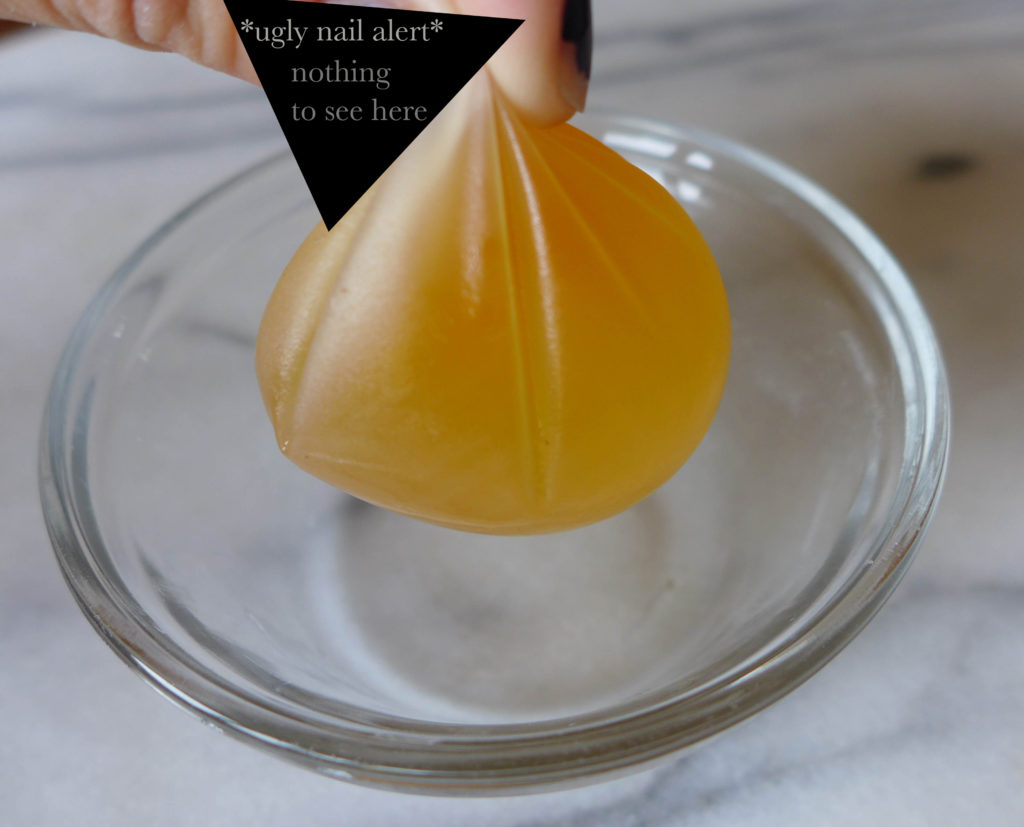
How To
- Create a concentrated simple syrup. Place one cup of water and 1.5 to 2 cups of sugar into a saucepan. Bring the mixture to a low simmer and stir until the sugar has completely dissolved. Take the mixture off the heat and let it cool to room temperature.
- Remove the egg from the vinegar and rinse it off.
- Place the egg and concentrated simple syrup into a jar or glass.
- Let everything sit for a day or two.
Now What?
- Gently pick up the egg. It should look and feel like a deflated sack.
- There’s really not much that you can “do” with it in this state, BUT now you’re ready for Phase 3!
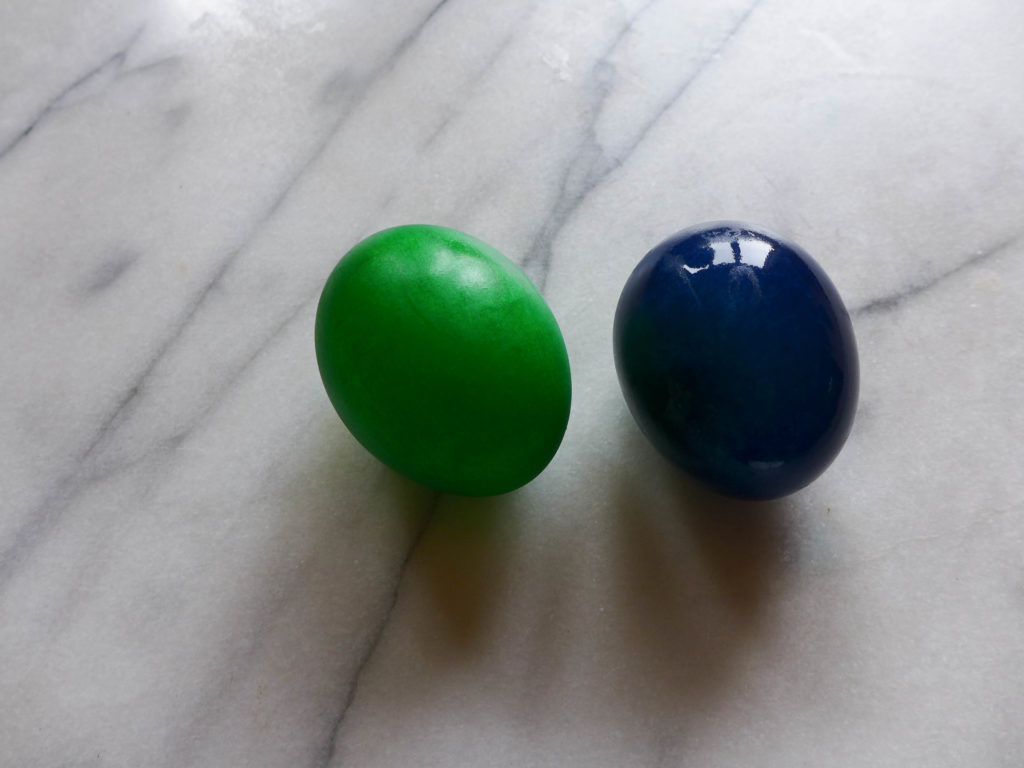
Phase 3
Ok, now that you have a deflated sack of a raw egg, it’s time to re-inflate it! BUT we’re going to add a bit of food dye to up the fun.
The concentration of water inside of the egg is noticeably low. We’re going to re-inflate the egg by simply putting it in a glass of water. The water is going to pass back through that semi-permeable membrane and fill up the egg.
How To
- Take the deflated egg out of the sugar water concentration and gently rinse it.
- Place about 1 to 2 cups of plain water in a jar or glass. Stir in a few drops of food coloring. Add the deflated egg and wait a day or so.
- Check on your egg! It should be big and bouncy again AND it will be filled with colored water. Give it a bounce or a squeeze.
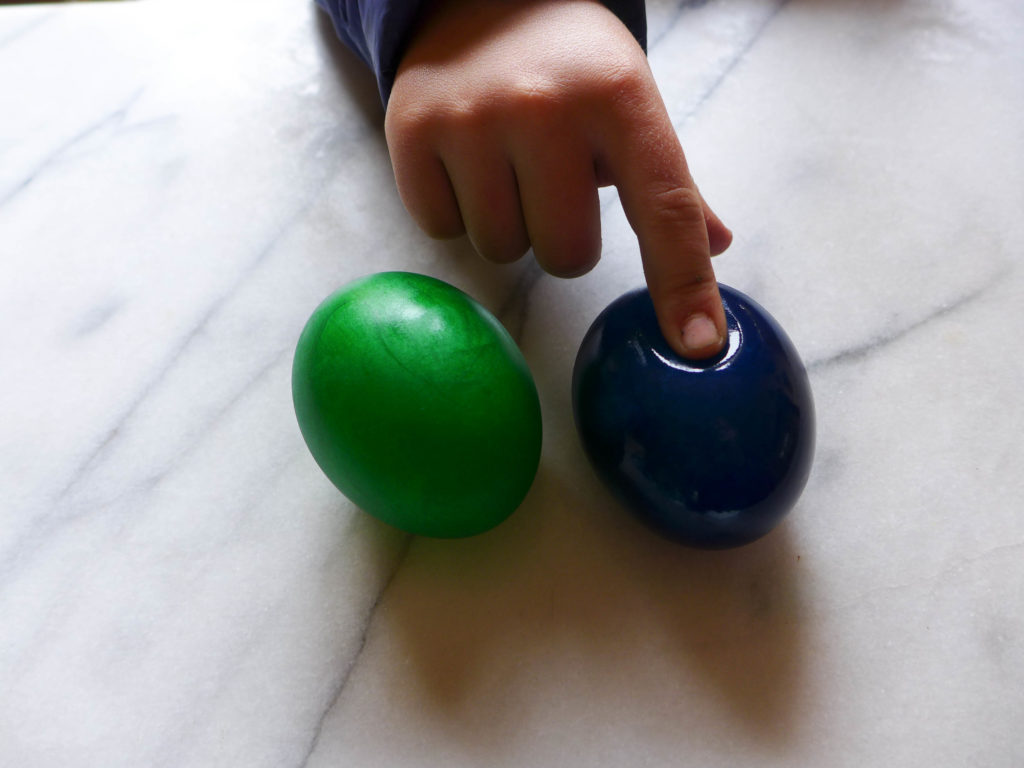
What do you think? Super fun and simple, huh?
